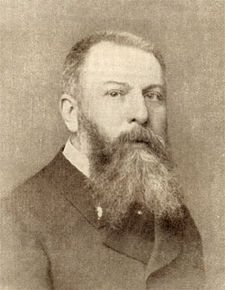Oberto, Conte di San Bonifacio performed at La Scala
 |
| The title page of the libretto for the opera's debut staging in Milan |
Oberto, Conte di San Bonifacio, which Verdi had written over a period of four years, is an opera in two acts. It is thought to have been based on an existing libretto by Antonio Piazza, reworked as a new libretto by Temistocle Solera, an Italian novelist.
Piazza’s libretto had been given to Verdi by Pietro Massini, director of the Società Filarmonica, a choral group to whom he had been introduced by Vincenzo Lavigna, the maestro concertatore at La Scala, of whom Verdi was a private pupil.
It was given the title of Rocester and Verdi was keen to see it produced in Parma, at the opera theatre nearest to his home town of Busseto, where he held the post of maestro di musica of the municipal orchestra
However, Parma said they had no interest in staging new works and instead an approach was made to Milan. Whether Rocester actually became the basis for Oberto is subject to some disagreement among academics.
Verdi is said to have been invited to meet the La Scala impresario, Bartolomeo Merelli, who had been given good reports of Oberto’s musical quality and offered to put it on during the 1839 season. It was received well enough on its premiere to be given another 13 additional performances. Merelli was impressed enough to commission Verdi to write three more operas.
 |
| Ignazio Marini was the first to perform the role of Oberto |
The action in Oberto, Conte di San Bonifacio, is set in Bassano del Grappa, in the Veneto region of northern Italy, at and around Ezzelino da Romano's castle.
Following a battle fought between Oberto, Count of San Boniface, and the Salinguerra, led by Ezzelino da Romano, the vanquished Oberto retreats to Mantua.
Meanwhile, his daughter Leonora has been seduced and abandoned by Riccardo, Count of Salinguerra, and Riccardo is about to marry Cuniza, Ezzelino's sister. Leonora makes her way to Bassano on Riccardo's wedding day, intent on confronting him.
The opening night cast, under the direction of conductor Eugenio Cavallini, featured the bass Ignazio Marini in the role of Oberto, with soprano Antonietta Marini-Rainieri as Leonora, the English mezzo-soprano Mary Shaw as Cuniza, mezzo-soprano Marietta Sacchi as Cuniza’s confidante, Imelda, and tenor Lorenzo Salvi in the role of Riccardo.
The opera is only occasionally performed today, although in celebration of the Verdi bicentennial, it was staged by La Scala in April/May 2013.
 |
| Bassano del Grappa is famous for Andrea Palladio's timber bridge over the Brenta river, built between 1124 and 1209 |
Bassano del Grappa, where Oberto is set, is an historic town at the foot of Monte Grappa in the Vicenza province of the Veneto, famous for inventing grappa, a spirit made from the grape skins and stalks left over from wine production, which is popular with Italians as an after dinner drink to aid digestion. A famous sight is the Ponte degli Alpini, a bridge designed by Andrea Palladio. The painter Jacopo Bassano was born in Bassano del Grappa and took his name from the town.
 |
| The church of San Michele Arcangelo in Busseto, where Giuseppe Verdi played the organ as a young man |
Busseto is a town in the province of Parma, about 40km (25 miles) from the city of Parma. Verdi was born in the nearby village of Le Roncole but moved to Busseto in 1824. The area has plenty to offer Verdi fans, who can visit the house where he was born, in 1813, in Le Roncole, the churches of Santa Maria degli Angeli and San Michele Arcangelo, where he played the organ, the Palazzo Orlandi and the Villa Verdi, two of his homes, the Teatro Giuseppe Verdi, which was named in his honour, and the Casa Barezzi, the home of his patron, Antonio Barezzi, which now houses a permanent exhibition of objects and documents related to Verdi and the Barezzi family.

